The Best Ford F-150 Engine Is The Smallest One You Can Buy
After one week with a 2016 Ford F-150 XLT SuperCrew 2.7-liter EcoBoost, I’m convinced that this small turbocharged V6 engine is the pick of the current F-150 range.
Stunning acceleration, a positive working relationship with the F-150’s six-speed automatic, minor capability cutbacks, and a lower price tag combine to make the 2.7-liter completely worthy of full-size pickup truck duty, difficult though it may be for owners of 6.8-liter V10-powered Ford Super Dutys to believe.
But based on our week-long experiences with each F-150 EcoBoost engine, fuel economy hardly plays into the 2.7-litre’s favorable equation.
Admittedly, no two real-world fuel economy tests are identical. Our 2015 F-150 (SuperCrew, 4×4, 145-inch wheelbase) 3.5-liter EcoBoost test specimen arrived last November in Platinum guise with 275/55R20 Hancook Dynapro AT-m tires and a 3.31 rear axle. After a week of exhaustive use, the result was 17.8 miles per gallon.
Little more than four months later, a 2.7-liter EcoBoost-equipped F-150 (SuperCrew, 4×4, 145-inch wheelbase) arrived in our driveway courtesy of Ford Canada as a heavily equipped XLT on 275/65R18 Goodyear Wrangler Fortitude HTs with a 3.55 rear end. This time, a slightly greater portion of the test was completed on the Trans-Canada Highway between Eastern Passage, Nova Scotia, and Shubenacadie, and fuel economy was better: 19.4 miles per gallon.
A meaningful difference? Hardly. Imagine you’re driving 12,000 miles per year and prevailing fuel prices in the heart of truckland, Dallas, Texas, are $1.80/gallon, as they are now. At 17.8 miles per gallon, the F-150 EcoBoost 3.5-liter will cost $1,213 per year. At 19.4 miles per gallon, the F-150 EcoBoost 2.7-liter will cost $1,113 per year, a savings of – drum roll, please – $8 per month.
Fuel won’t always be cheap, of course. If our hypothetical Texas truck owner keeps his F-150 long enough, he’ll pay $4.00/gallon. (Eventually. Some day. Maybe.) At that point, the 3.5-liter EcoBoost F-150 will cost $2,697 per year at 12,000 miles, $223 more than the 2.7-liter F-150 will cost. Still, that’s only a $19 savings per month, hardly the stuff of Prius or even Ram EcoDiesel dreams.
(Keep in mind, we drove a couple of F-150s around town and on the highway for a week, but the EPA’s fuel economy numbers aren’t much different: 20 mpg combined for the 2.7-liter; 18 mpg for the bigger 3.5 turbo. On Fuelly.com, 2016 F-150 SuperCrews with the 2.7-liter are averaging 19.2 mpg while 2016 F-150 SuperCrews with the 3.5-liter EcoBoost are down at 16.3 mpg. Consumer Reports calls it 17 mpg for the 2.7; 16 mpg for the 3.5.)
If the available fuel savings are limited, if the 2.7-liter gives up 40 horsepower and 45 lbs-ft of torque, and if the 2.7-liter needs more revs to reach peak torque, how is this the pick of the F-150 range?
It’s $1,400 cheaper.
And it’s just as quick.
Indeed, the 2.7-liter feels quicker in everyday driving and seems to have a somewhat happier marriage with the six-speed automatic transmission. Perhaps at fault are the 3.5 EcoBoost’s bigger 20-inch wheels and the Platinum trim’s presumably greater curb weight.
Granted, over the life of a five-year payment plan, the 3.5-liter EcoBoost’s $1,400 premium won’t seem terribly arduous. Ford is currently offering interest-free financing over 60 months, which means the bigger EcoBoost costs only $23 more per month.
Now, however, our monthly savings total $31 for a truck that’s just as quick. And we do mean quick. Consumer Reports tested the duo and found the 2.7-liter EcoBoost accelerates to 60 miles per hour in 7.0 seconds, two-tenths quicker than the 3.5-liter EcoBoost. Car And Driver’s SuperCab 2.7-liter EcoBoost did the deed in 5.7 seconds, one-tenth shy of the heavier SuperCrew’s 3.5-liter time. Acceleration times at higher speeds were essentially the same, as well.
At best, the outright power difference is imperceptible, though the 2.7-liter sounds less like a vacuum when being hustled.
Not until you take towing and payload capacity into account does the 3.5-liter EcoBoost outshine its little brother. Like for like, an F-150 SuperCrew 4×4 with the 145-inch wheelbase and the 3.5-liter powerplant can tow up to 11,500 pounds, 3,500 more than the 2.7-liter, and accepts a 2,060-pound payload, 100 more than the 2.7-liter.
Those aren’t irrelevant numbers, but if regular high-weight towing is on your radar, isn’t a heavy-duty truck the more suitable vehicle?
There’s hardly any towing of any kind on my radar. Filling the bed with home reno materials that would otherwise be chucked into the back of our Odyssey will scarcely challenge either EcoBoost F-150. With superior economy, similar off-the-line punch, a significant price advantage, and all (if not more) of the 3.5-liter’s driveability and refinement, I can’t imagine paying more and, in my case, getting nothing for it.
Then again, Ford’s rumbling 5.0-liter V8 costs only $800 more than the EcoBoost 2.7 and doesn’t sound like a sewing machine in need of repair.
[Images: © 2016 Timothy Cain and Stephanie Cain/The Truth About Cars, Ford Motor Company]
Timothy Cain is the founder of GoodCarBadCar.net, which obsesses over the free and frequent publication of U.S. and Canadian auto sales figures. Follow on Twitter @goodcarbadcar and on Facebook.
More by Timothy Cain
Latest Car Reviews
Read moreLatest Product Reviews
Read moreRecent Comments
- Tane94 Awaiting the EV3 unveil this month. Kia continues to lead, though I will miss the Soul
- Jeanbaptiste I know this will never be seen, but the real answer is NO Government mandated tech. The reason why is that when the government mandates something, we miss out on signals that the free market will give to weather or not people actually want this or that this tech would actually help. It's like mandating AM radio for cars when people could just buy a $10 am radio if they really like am so much.
- 28-Cars-Later $12K? I needed a good laugh.
- EBFlex Wait...the feds are claiming that inflation was not FJBs fault 6 months prior to an election where he is massively losing in the polls in every single category?Eyebrow raised.
- MaintenanceCosts Most of the article after the blockquote is Posky laboring mightily to somehow blame this clearly anticompetitive and oligopolistic conduct on the big bad government.I look forward to some of the usual commenters explaining to us that, actually, the oil industry is a cuddly teddy bear and the real villain is people trying to sell us cars that don't use oil.


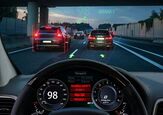




















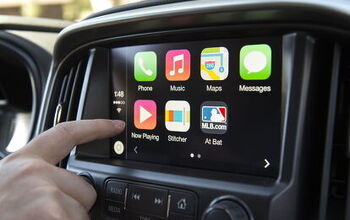


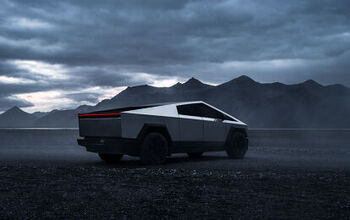



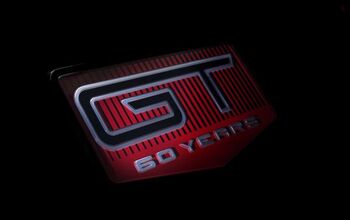

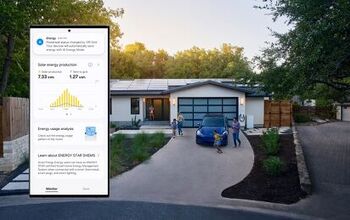


Comments
Join the conversation
We bought a 2016 Ford F150 with the 2.7 L Ecoboost engine in September 2016. On Dec 23, 2016 with only 6200 Kms (which is approx 3600 miles) it was dead in the driveway and towed to the dealer. Error message was "Engine Coolant Overtemperature" which did not make sense in a December Canadian winter on a truck that had sat in the driveway all night. How would it get overtemperature in those conditions? The dealer diagnosed a coolant sensor and wiring problem. To date we STILL do not have our truck back. It has been sitting in the exact spot on the Oshawa dealer's lot since it was towed in. Ford says they have to make the wiring harness for it. It is almost 7 weeks now and still no truck. Why would Ford not have a wiring harness in stock on a vehicle that's been in production over a year now? This totally stinks and we are sorry we ever bought this truck. We are exploring Canadian laws that force manufactures to buy back vehicles under certain conditions. Our experience attests to at least one 2.7 ecoboost engine that does not deserve any accolades but rather quite the opposite. It deserves 5 lemons and a rotten egg award.
I just sold my Dodge Ram with high mileage. It had the 4.7 v8 which was a dog in the wind and was awful at acceleration on the highway. I then went to buy another Dodge with the 5.7 hemi which I took for a test drive. While waiting for the dealer to locate the truck with features I wanted, I decided to test drive a Ford F150. I checked out the v8, the 3.5 and 2.7. It was a slam dunk. Among all I tried the 2.7 was the quickest, had the most power for my driving situation and had the best price of any. I went home began to study the technology and see if this engine was feasible for long term and would do the occasional tow/haul, commute, lumber load, etc. I ended up with the 2.7 ecoboost and am still amazed at the performance. I live near 65 miles from the nearest town out here in W Texas and even when I hauled lumber I still needed something to get me there unloaded. The fuel savings coupled with the ability to handle the load all in one vehicle made the choice a definite. I was very skeptical about the small turbo boosted v6 for a full size pickup. The aluminum body coupled to the small v6 was a no brainer. I'm so glad I chose the Ford over the Dodge. Even after owning Dodges for over 40 years, the advanced technology Ford uses sold me. And for those who think the 2.7 isn't on par with the v8, you are wrong. At least for my situation, I was surprised to find I no longer need a v8 pickup to do work with. Anyone who hasn't used one of these new high tech trucks needs to shut their pie hole until they do. The v8 is not necessary for most 1/2 ton buyers.